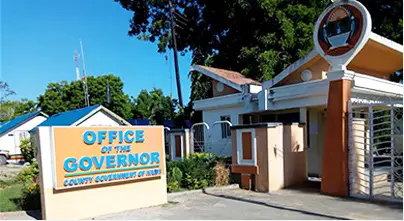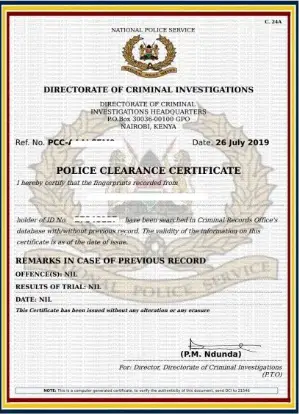When a government-owned vehicle changes hands, it needs to be re-registered to update ownership details and ensure transparency. This is not just a formality; it’s essential for tracking vehicle ownership and maintaining records accurately. So, what’s the deal with re-registration?
It involves several steps, including obtaining and filling out specific forms, collecting necessary documents, surrendering old number plates, setting up a TIMS (Transport Integrated Management System) account, submitting the application, and patiently waiting for it to be processed.
Requirements for Re-registration
Let’s dive into the nitty-gritty of what you’ll need to get started.
1. Form A (downloaded from KRA website)
Start by downloading Form A from the Kenya Revenue Authority (KRA) website. This form will serve as your initial application for re-registration.
2. Form C (duly stamped by ministry)
You’ll also need Form C, which should be duly stamped by the relevant ministry. This form verifies the vehicle’s history and eligibility for re-registration.
3. Original purchase receipt
Proof of purchase is essential. It helps establish the authenticity of the vehicle’s ownership transfer.
4. Letter from the Principal Secretary (PS)
This letter from the Principal Secretary further validates the vehicle’s history and ensures a smooth transition in ownership.
5. Customs entry and duty receipt
These documents are crucial for vehicles that were imported. They confirm that all import duties were paid.
6. Sale catalogue
A sale catalogue provides additional information about the vehicle’s history, which can be helpful during the re-registration process.
7. Auction notice
If the vehicle was acquired through an auction, you’ll need the auction notice to support your application.
8. KRA PIN and ID copies of the buyer
Proof of identity is necessary for both security and legal reasons. Make sure you have your KRA PIN and ID copies ready.
9. Tape lift report
This report might not be on everyone’s checklist, but it’s important for some vehicles. It ensures that the vehicle hasn’t been tampered with.
10. Surrendering the Number Plates
Don’t forget to hand over the old number plates. They need to be returned as part of the re-registration process.
11. Letter of surrender stamped by our officers
To complete the number plate surrender, you’ll need a stamped letter of surrender from the relevant authorities.
12. New owner must have a TIMS account
Setting up a TIMS account is a crucial step. It’s an online platform that streamlines various vehicle-related services.
Challenges and Pitfalls
Re-registering a vehicle, especially an ex-government one, can come with its fair share of challenges. Here are some common hurdles and how to address them.
Common Hurdles in the Re-registration Process
- Missing Documents: It’s easy to overlook a document or two, but missing paperwork can lead to delays. Double-check your checklist to avoid this issue.
- Inaccurate Information: Typos and inaccuracies in your forms can slow things down. Take your time when filling them out.
- Long Processing Times: Sometimes, the processing time can be longer than expected. Be patient and check your application status regularly.
- Confusing Paperwork: Government paperwork can be intimidating. If you’re unsure about something, don’t hesitate to seek help or clarification.
How to Address Potential Issues
To address these challenges:
- Double-Check Your Documents: Before submitting your application, review all your documents to ensure nothing is missing or inaccurate.
- Be Patient: Understand that processing times can vary. Give it some time before following up on your application.
- Seek Help: If you’re confused about any part of the process, don’t hesitate to contact the NTSA or consult someone experienced in vehicle re-registration.
Benefits of Re-registration
Now that we’ve covered the requirements and process, let’s talk about why re-registration is essential and the benefits it offers.
Enhanced Transparency
Re-registration ensures that there is a clear record of ownership transfer. This transparency prevents fraudulent activities and promotes accountability. You can rest easy knowing that your vehicle’s history is documented correctly.
Efficient Vehicle Ownership Transfer
Imagine if vehicle ownership transfers were a chaotic, unregulated mess. Re-registration streamlines the process, making it easier for buyers and sellers to transition smoothly. It’s like a well-oiled machine that keeps the vehicle market running.
Revenue Generation for the Government
Re-registration also generates revenue for the government. The fees collected from re-registration contribute to various development projects and services that benefit the public. So, in a way, you’re contributing to the greater good when you re-register your vehicle.
Conclusion
In summary, re-registering an ex-government vehicle with NTSA may seem like a daunting task, but with the right information and a bit of patience, it’s manageable.
Remember to gather all the required documents, fill out the forms accurately, surrender your old number plates, set up a TIMS account, and submit your application.
Be prepared for potential challenges, but don’t let them discourage you. Re-registration ensures transparency, efficient ownership transfer, and contributes to government revenue, so it’s a win-win for everyone.
So, the next time you’re handed the keys to an ex-government vehicle, you’ll be well-prepared to navigate the re-registration process. Happy driving!



